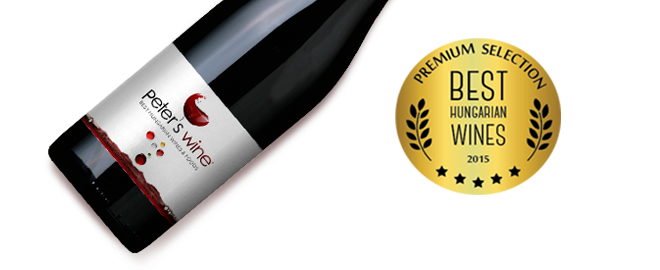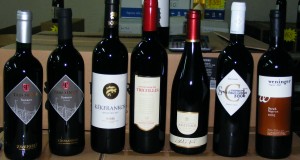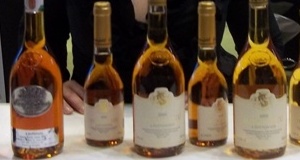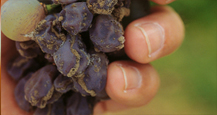The Tokaj Wine Region lies 240 kilometres North-East of Budapest, capitol of Hungary, situated in the Zemplen Mountains where Tisza and Bodrog rivers meet. The soil is largely clay or loess with a volcanic substratum.
Tokaj Wine Region enjoys long sunny summers, while dry autumns and the early morning mists, created by the meeting of the two rivers, encourage the development of noble rot, similar to Sauternes, France. The Botrytis cinerea makes the berries dry and shrivel (dry berries are called 'aszu'), thus concentrating the compounds and developing the aszu berries. All of these characteristic elements give the wines of Tokaj their own distinctive and unique terroir. One vine yields approx one glass of wine.
According to legend, the 1650 (or in some versions the 1647) harvest was interrupted by the threat of a Turkish invasion. The grapes were left on the vine and when pickers returned to the vineyards in November, the grapes had shrivelled and dried. The wines they produced, judiciously blended with wine from the previous vintage, were a revelation.
By the end of the 17th century, Tokaji aszu wines were so well regarded throughout the Courts of Europe, that Prince Rakoczi was urged to classify all the finest vineyards around the 28 villages in the region. Thus, the famed Tokaj Wine Region has the distinction of being Europe's first classified wine region (1772). Louis XIV dubbed Tokaji Wine the 'Wine of Kings and King of Wines' - quite a compliment from the king of such a legendary wine producing nation as France.
Let's make Hungarian language a little bit clearer:
Many people think Tokaji means 'sweet wine' or 'aszu' but the truth is that it means 'from Tokaj'. Tokaj = is the name of the wine region. Tokaji = from Tokaj All Aszu is Tokaji, but not all Tokaji wines are Aszu. Also, a lot of people think only sweet wines are made in Tokaj. It's not true: excellent dry, semi dry and semi sweet wines are also produced in Tokaj Wine Region.
Wineries:














